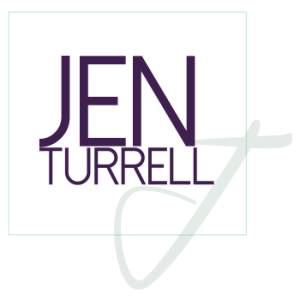Financial Fluency Episode #18: The Dark and Light Sides of the Compound Interest Force
Today I want to talk to you about compound interest.
This is something a lot of us hear when we first start learning about money, and in a lot of personal finance books it’s kind of called things like the eighth wonder of the world or the magic of compound interest, and we’re all kind of told to believe that if we can just get enough time behind our money, it will really make a huge difference in our life.
You can listen in below and Tweet it out here
It is true that the earlier you start investing in saving, the better off you are. However, lately – well, I say lately, I mean for the last decade – the truth is it has not been a very kind world to save in, in terms of the interest that we can get.
Interest rates have been rock bottom and almost zero in many places in the world, including the United States. It’s been so low to encourage borrowing and to kind of lube up the gears of the mechanism of the economy, so that people who are relying on savings and income from savings have really not been doing well.
It’s pretty much got to the point that if you don’t want to be losing money to inflation, you have to put it into something that gets more than your regular savings interest rates
What this usually looks like is investing it into the stock market. However, as we saw back in 2008, the stock market can be extremely volatile depending on different cycles and bubbles and things that go on in the economy, so a lot of people, understandably, get scared by that.
In the past people have said that the best way to use compounding is really in a way when there is not the risk of principal loss, so here’s the issue. A savings account does not have the risk of principal loss, you won’t lose your principal, your principal’s safe as long as it’s in an FDIC insured account and is under 250 thousand dollars. However, if you want something more than the less than one per cent that most people are getting in interest on their savings accounts, you have to do something much more risky and put your money at risk by investing it in something where there could be principal loss.
There’s huge potential for the principal loss that you could have in the stock market, but if you leave it in a savings account you are losing money to inflation every day.
So What’s a Person to do?
The positive type of compound interest is where you have money that is making money for you, either in a savings account at a super teeny tiny amount that’s actually losing money to inflation every year or you have it invested in some kind of other investment vehicle like:
- A fund
- Some kind of stocks
- EFTs
- Bonds, or
- Annuities
There are a lot of these different vehicles that you can put money into, from which it’s invested.
The wisest way to do these things is to also get tax benefits from them, because that also helps offset the amount that inflation’s affecting them, so either you can do one of two types of tax advantaged accounts, one where you are taxed now and you pay nothing on the gains over time, or where you save taxes now, have that pre-tax dollar earning money for you, and then you pay the taxes at the other end. You can get more information on what these differences mean to your dollar here.
The Dark Side of The Force
All of this is thought of as the good kind of interest, and it is good, it’s positive and at least you’re going in the right direction. The way that compound interest works against you, the dark side of the force, is when you’re the one who owes money and are paying interest out while you get very, very little interest for loaning the bank your money. When you put money into a savings account, you are loaning the bank money. They are the borrower and you are the lender, but you get almost nothing for it. Tweet That!
However, when you borrow the money, say from a credit card company, they could be charging you anywhere from eight to 24 per cent, depending on what kind of credit card you have, what the APR is, what your credit history is and if you have any dings on that history like late payments or not making the minimum payment and so on. Those things all make it harder for you to get lower interest rates.
Right now because there are so few venues for us to use the positive side of the force in terms of compound interest, I think one of the biggest ones we can have is to mitigate the damage done by this negative interest.
How do We do That?
 By getting out of debt and paying off those high interest credit cards, paying off the highest interest first and going down the line from there.
By getting out of debt and paying off those high interest credit cards, paying off the highest interest first and going down the line from there.
A lot of us have multiple kinds of debt, and I’m including myself in this. I am by no means someone speaking as a fully debt free person. I have a mortgage, I have a car payment, there are times when I have balances on my credit card, and I know that the best thing to do with credit cards is to pay off the balance in full every single month.
If you are not there yet, make that the first goal. Get one credit card completely paid off, then work through the others, and once they’re all completely paid off, get in a system of paying it off every month, of not putting more on there than you will be able to pay off.
I do think there are ways to use credit cards as tools, but it’s so tricky to get into that situation in case something goes wrong and you don’t have your savings account built up. I also like to have a curveball savings where I keep savings for things that happen irregularly, but aren’t totally unexpected, things like car repairs, needing to replace things in your home, and also bills that aren’t monthly, but come up regularly, like car or home insurance.
It’s good to look back over the last few years and figure out how much those not quite monthly things have been, and make sure you’re setting that aside so it doesn’t go on the credit card.
A Personal Example
We’re keeping my car payment because it’s at 0.9 per cent interest which is lower than our mortgage. If we had no car payments, in one way it would feel like a lot more money every month because there wouldn’t be that extra bill, but at the same time it’s so low interest that it would actually make sense for us to pay off some of our mortgage before paying off that car payment.
We’re carrying that on for now, unless we get to the point where all of our other revolving credit is completely paid off and all we have are these installment type credits. Revolving credits are things like your credit cards, things that are consumer debt, and installment credit is things like car loans and student loans. These are things where you paid for something big, it’s relatively secured, they’re pretty sure, and it’s hard to get out of it. If you don’t pay your car payments, they can come and repossess the car.
In terms of credit, the things that are weighted most heavily are the revolving credit, which is basically your credit cards, so paying those off first before anything else makes the most sense.
That’s really what you can do right now to make the most of the current financial situation. We can’t get a whole lot of positive compound interest out of savings accounts, we can get some out of investing, but with some risk if we do it in a tax advantaged way, but the biggest wins most of us can get are to pay off our debt and not get into that negative cycle of giving the banks the compound interest from that.
If you’re ready to tackle your debt in a constructive way, you can check out my Debt Reduction Lab here In this mini-course you’ll going to learn my three step process for reducing your debt starting now.
My Favorite Debt Management Tool
I have shouted this app out a lot since it came out and I started using it, because I think it’s really the best way to do it right now. If you are in Canada, the UK, Europe, Australia – which I’ve been surprised at, listening to the make-up of my listeners – I don’t think Ready for Zero works with banks outside of the United States, so if that is the case, you can go to bankrate.com where they have some great debt calculators that help you do the same sort of rolling out the plan, seeing how much you want to pay each month and how to pay off that highest interest debt first.
This takes a little more work from you, whereas if you have the app it sucks in all the transactions and interest rates and it also updates your credit relatively frequently so you can see how the actions you’re taking affect your credit every three to six months.
I really love how it shows you the daily interest you’re paying, because for me it made such a difference just to see how much that was every day and realize, wow, when I get all of this debt paid off, that’s money in my pocket every single day. It’s like giving yourself a raise, getting rid of all the interest we pay.
If you enjoyed this episode you can subscribe to Financial Fluency here on iTunes.
Mastering Money Matters
What if managing your money and feeling wealthy was easy?
Imagine going from feeling sick to your stomach every time you have to pay a bill, to having a system that pays all of your bills on time, and shows you at a glance where all of your money is and where it is going.
Mastering Money Matters will show you a new way of looking at your finances so you can set up your systems, enjoy your money, and stop worrying about your next bill.
If you’ve been desperately avoiding looking at your finances and hoping it all just magically works out – money comes in, it doesn’t run out, and you have enough for a bit of extra spending – enroll in Mastering Money Matters today.

 Adrienne Dorison is the host of The School of Self-Mastery podcast, a no-nonsense business mentor to online entrepreneurs and a passionate dog mom.
Adrienne Dorison is the host of The School of Self-Mastery podcast, a no-nonsense business mentor to online entrepreneurs and a passionate dog mom.